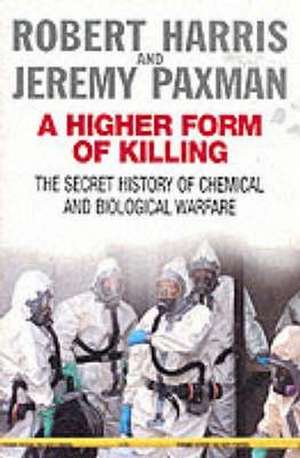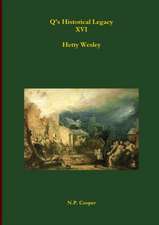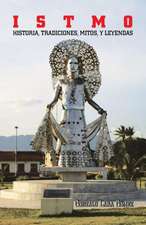A Higher Form of Killing
Autor Jeremy Paxman, Robert Harrisen Limba Engleză Paperback – 21 feb 2002
| Toate formatele și edițiile | Preț | Express |
|---|---|---|
| Paperback (2) | 78.34 lei 24-30 zile | +26.21 lei 4-10 zile |
| CORNERSTONE – 21 feb 2002 | 78.34 lei 24-30 zile | +26.21 lei 4-10 zile |
| Random House Trade – 31 iul 2002 | 117.69 lei 6-8 săpt. |
Preț: 78.34 lei
Preț vechi: 94.34 lei
-17% Nou
Puncte Express: 118
Preț estimativ în valută:
14.100€ • 16.29$ • 12.60£
14.100€ • 16.29$ • 12.60£
Carte disponibilă
Livrare economică 03-09 aprilie
Livrare express 14-20 martie pentru 36.20 lei
Preluare comenzi: 021 569.72.76
Specificații
ISBN-13: 9780099441595
ISBN-10: 0099441594
Pagini: 336
Ilustrații: 16
Dimensiuni: 129 x 196 x 25 mm
Greutate: 0.25 kg
Editura: CORNERSTONE
Locul publicării:United Kingdom
ISBN-10: 0099441594
Pagini: 336
Ilustrații: 16
Dimensiuni: 129 x 196 x 25 mm
Greutate: 0.25 kg
Editura: CORNERSTONE
Locul publicării:United Kingdom
Notă biografică
Robert Harris is the bestselling author of FATHERLAND, ENIGMA and ARCHANGEL. He is also a respected journalist. Jeremy Paxman is the author of the bestselling book THE ENGLISH. He is a regular radio and TV presenter, most notably for Newsnight. Robert Harris and Jeremy Paxman initially worked together on this book when they were both reporters for Panorama
Extras
"Frightfulness"
The twenty-second of April 1915 had been a warm and sunny day, but toward the end of the afternoon a breeze sprang up. It came from the north, from behind the German lines, blew across no-man's-land, and gently fanned the faces of the Allied soldiers in position around the village of Langemarck, near Ypres.
They were new to the trenches-French reservists and Algerians from France's north African colony. To them the fresh wind must have seemed a good omen, for a few seconds later, as if on cue, the German guns that had been bombarding them all day suddenly stopped firing. An abrupt silence descended over the front.
A few hundred yards away, four divisions-of the Twenty-third and Twenty-sixth German Army Corps-crouched in their trenches. They had waited there since dawn, unable to move for fear of giving away their presence. Now, just as it had begun to seem too late, the moment had come. The wind had changed. An attack.
At five o'clock, three red rockets streaked into the sky, signaling the start of a deafening artillery barrage. High-explosive shells pounded into the deserted town of Ypres and the villages around it. At the same time the troops sheltering near Langemarck saw two greenish-yellow clouds rise from the enemy's lines, catch the wind, and billow forward, gradually merging to form a single bank of blue-white mist: out of sight, in special emplacements protected by sandbags and concrete, German chemical warfare pioneers were opening the valves of 6,000 cylinders spread out along a four-mile front. The cylinders contained liquid chlorine-the instant the pressure was released and it came into contact with the air it vaporized and hissed out to form a dense cloud. At thirty parts per million of air chlorine gas produces a rasping cough. At concentrations of one part per thousand it is fatal. The breeze stirred again, and one hundred and sixty tons of it, five feet high and hugging the ground, began to roll toward the Allied trenches.
Chemical warfare had begun.
The wave broke over the first line within a minute, enveloping tens of thousands of troops in an acrid green cloud so thick they could no longer see their neighbors in the trench. Seconds later they were clutching at the air and at their throats, fighting for breath.
Chlorine does not suffocate: it poisons, stripping the lining of the bronchial tubes and lungs. The inflammation produces a massive amount of fluid that blocks the windpipe, froths from the mouth, and fills the lungs. In an attempt to escape the effects, some men tried to bury their mouths and nostrils in the earth; others panicked and ran. But any exertion or effort to outdistance the cloud only resulted in deeper breaths and more acute poisoning. As the tide of gas washed over the struggling men their faces turned blue from the strain of trying to breathe; some coughed so violently they ruptured their lungs. Each man, as the British casualty report was later to put it, was "being drowned in his own exudation."1
Advancing cautiously behind the chlorine cloud came the German infantry, all wearing crude respirators of moist gauze and cotton tied round their faces. They passed through an unprecedented scene of horror. The dead lay where they had fallen, arms outstretched trying to escape the gas. Interspersed with the corpses, the wounded and dying sprawled gasping and choking as their agonized lungs coughed up mouthful after mouthful of yellow fluid. Any metal object the chlorine had come into contact with was tarnished. Buttons, watches, coins; all had turned a dull green. Rifles were rusted and looked as if they had been left out in the mud for months. Most of the breechblocks on the sixty guns the Germans captured that day were unusable.
Any of the French still capable of movement fled. The British suddenly found the roads and bridges of their sector clogged with retreating soldiers, many of whom could only point at their throats in explanation. By six o'clock, even as far back as ten miles, the chlorine cloud was still making men cough and their eyes smart. By seven o'clock, the few French guns that had been left in action were ominously silent.
The first large-scale gas attack had taken the Allied commanders so completely by surprise that it was not until the early hours of the morning that they began to appreciate the scale of the disaster that had overtaken them. The Germans had torn a hole four miles wide in the western front, smashing in an afternoon defenses that had held for months. The German commander, Falkenhayn, was as startled as his opponents by the overwhelming effect of chemical warfare. He had seen gas merely as an experimental aid to his attack and had insufficient reserves ready to exploit his advantage. But for that he might have been able to drive right through the Allied line to the Channel ports: the gas attack could have won the war for the Germans. Instead, as night fell over Ypres, the German soldiers dug in. Falkenhayn's "experiment," the Germans reckoned, had cost the Allies 5,000 men dead and 10,000 wounded.
Thirty-six hours later, while the British and the French were still struggling to fill the breach in their defenses, the Germans struck again. At 2:45 a.m., shortly before dawn on April 24, Captain Bertram of the Canadian Eighth Battalion noticed some greenish-white smoke rising from the German front line about 600 yards away. Traveling at eight miles an hour, the cloud "drifted along the ground toward our trenches, not rising to more than seven feet from the ground when it reached our front line."2 The bank of high-density chlorine rolled over the Canadians, whose only protection was handkerchiefs, socks, and towels that they urinated on and then stuffed into their mouths. Over the next few hours they were subjected to successive waves of gas so thick they blotted out the sun. Once or twice through the clouds the Canadians caught glimpses of German troops apparently dressed as divers, wearing large hoods with a single glass eyepiece set in the front.
There was the same panic-stricken scramble for the rear. On a small stretch of ground leading from the advanced trenches to the supports Bertram counted twenty-seven bodies of men killed trying to outrun the gas; he himself collapsed with vomiting and diarrhea, unable to breathe, with a feeling "of great heaviness in the bottom of the chest."
The German gas and artillery attack killed 5,000 men. Sergeant Grindley of the Canadian Fifteenth Battalion was one of hundreds carried off the battlefield into the primitive medical posts. The doctors had no idea how to treat gas casualties and two days later Grindley died, gasping for breath. The surgeon who treated him called it "air hunger." In blue pencil he scrawled a postmortem report:
The Body showed definite discoloration of the face and neck and hands. On opening the chest the two lungs bulged forward. On removing the lungs there exuded a considerable amount of frothy light yellow fluid, evidently highly albuminous, as slight beating was sufficient to solidify it like white of egg. The veins on the surface of the brain were found greatly congested, all the small vessels standing out prominently.3
Of those who survived the gas attack, 60 percent had to be sent home; half were still fully disabled at the end of the war.
Neither for the first time nor the last, men like Grindley-"lions led by donkeys"-suffered for the blunders of their commanders who for weeks beforehand had been warned of what the Germans were planning. Although the facts were suppressed at the time, we now know that on April 13, over a week before the first attack, a French patrol had captured a German soldier actually carrying a respirator. The soldier, a twenty-four-year-old private named August Jäger of Germany's Twenty-sixth Army Corps, revealed the German plan to use gas and described the position of the cylinders (the existence of which had already been confirmed by aerial reconnaissance). Jäger's information was passed to the French divisional commander, General Ferry, who in turn passed it on to the British and French high commands with the advice either that the men threatened be withdrawn or the gas emplacements bombarded. Both his warning and his advice were ignored. As the official British report on the affair-classed "secret" until almost sixty years after the attack-put it:
We were aware of the fact that the Germans were making preparations for the discharge of gas for several days previously. . . . Nobody seems to have realized the great danger that was threatening, it being considered that the enemy's attempt would certainly fail and that whatever gas reached our line could be easily fanned away. No one felt in the slightest degree uneasy. . . .4
Neither Ferry nor Jäger profited when their predictions were proved correct. Ferry was dismissed from his post by the French high command, furious at having their incompetence revealed. Jäger's fate was grimmer. In a memoir published in 1930, Ferry imprudently named him as the source of his information. Jäger, now a civilian, was promptly arrested, and at Leipzig in 1932 he was sentenced to ten years' penal servitude, the court deciding that his betrayal of German plans had helped cost them the war-the last and perhaps saddest casualty of the first gas attack.
The victims of Ypres were evacuated to the area around Boulogne, where they became the focus of intense scientific curiosity. What gas were the Germans using? What protection could be devised against it? The British ransacked their universities and hospitals for experts who might be able to provide the answers to these questions, and by the end of April the seaside town was filled to overflowing with wounded and dying men, attended by a small army of specialists and academics.
The largest hospital was housed in the famous prewar casino at Le Touquet, one of the great symbols of the golden era that came to an end in August 1914. Now-wrote one of Britain's leading physiologists, Joseph Barcroft-in elegant rooms that had once echoed to the sound of the roulette wheel, "one simply wades through wounded." Another hospital, in the Pleasure Pavilion at the end of the pier, was "so full that it was almost impossible to move about. All the beds full and all available space on the floors. All the other hospitals are the same. Sometimes the beds are made and three cases pass through the bed in a day."5
The feelings of shock and outrage were compounded by the fact that poison gas was specifically outlawed by international law. The Hague Declaration of 1899 had helped lay down the principle that there were certain methods of combat that were outside the scope of civilized warfare. The signatories, including Germany, had pledged among other things "to abstain from the use of projectiles the object of which is the diffusion of asphyxiating or deleterious gases."
To the gassed soldiers sixteen years later, this Edwardian gentlemen's agreement must have been as far removed from the realities of 1915 as the ornate chandeliers and paintings crated away at the casino. With extraordinary cynicism, the Germans claimed that by not using projectiles but instead releasing the cloud of gas from cylinders, they had avoided breaking the Hague agreement. The German newspaper Kölnische Zeitung went so far as to claim that "the letting loose of smoke clouds, which, in a gentle wind, move quite slowly toward the enemy, is not only permissible by international law, but is an extraordinarily mild method of war."6 The British commander in chief, Sir John French, did not think so. On April 23 he telegraphed London asking for the means to retaliate. On the twenty-fourth, as the Canadians were enduring the second gas attack, Lord Kitchener, the war minister, replied. "Before we fall to the level of the degraded Germans," he informed French, "I must submit the matter to the government." It was clear, international agreements notwithstanding, that general chemical warfare could not now be far off. While the cabinet considered the British position with regard to gas, news of the attack was spread to the general public.
There was a great spasm of anti-German feeling. The press fueled the anger, printing vivid accounts of the suffering of the wounded. "Their faces, arms, hands were of a shiny grey-black colour," wrote The Times of London, "with mouths open and lead-glazed eyes, all swaying slightly backwards and forwards trying to get breath."7 Lord Northcliffe's Daily Mail appealed to the women of England to make respirators using a simple pattern of cotton wool in a gauze envelope. The response to the Mail's call was enormous: a million of these embryo gas masks were made in a single day. Unfortunately, thousands reached the front and were issued; they were useless when dry and caused suffocation when wet. A week after they arrived, the British high command ordered them to be withdrawn; by the time the last one disappeared from the battlefield some days later, the Mail's respirator had been responsible for the deaths of scores of men.
Not that the official policy was much better. The army relied on the advice of two British professors, Haldane and Baker, who visited the front on April 27. They recommended as protection the "use of cloths, etc., moistened with urine, earth folded in cloth or enclosed in a bottle from which the base has been removed."8 These stopgap measures were all that the Allies had to carry them through three gas attacks on May 1, 6, and 10.
The last and greatest attack of the summer came on the twenty-fourth. At dawn, under cover of a heavy artillery barrage, the Germans released chlorine along a two-mile sector of the front, between the Menin Road and Sanctuary Wood, southwest of Ypres. The men who held the line-soldiers of the British First Cavalry, Fourth, and Twenty-eighth Divisions-clutched hastily issued respirators consisting of two layers of flannel (with tapes attached to tie over the mouth) that were meant to be dipped in soda solution before use, bottles of which were placed in the trenches.
The menacing cloud of greenish-white gas swirled over the British positions as it had over the French and Canadian, but this time at a totally unexpected density. The chlorine reached a concentration that proved fatal a mile and a half away; it was still strong enough to cause vomiting and smarting of the eyes nine miles from the front. Three miles back, at Ypres, houses and trees were completely blotted from view and the cellars of the hospital "became filled with a fog." In the trenches themselves-only a few hundred yards from the cylinders-the gas produced desperate scenes, as General Wilson recorded:
At first men used their respirators correctly, but as they became choked with gas the men redipped them in the solution which was distributed along the trenches.
As the gassing continued, the men became excited and could not be prevented from putting the respirators to their mouths without squeezing them dry, the result was that the men could not breathe through the saturated respirators and, thinking they were being suffocated by the gas, dipped them at shorter intervals, breathing hard between the dips instead of holding their breath, with the inevitable result that they were rendered unconscious by the gas.9
The attack lasted for over four hours. During the next few days, nearly three and a half thousand men were treated for gas poisoning; more than half of them had to be sent home to England. There were no figures for the number of dead.
Two days later, on May 26, a strange figure clad in a uniform "bearing telltale marks of long association with mud and barbed wire," a cap split by a shell splinter and a pistol strapped to his belt, appeared at the Advanced General Headquarters of the British army at Hazebrouck. Major Charles Howard Foulkes of His Majesty's Royal Engineers had an appointment with General Robertson, chief of staff to Sir John French. It was an interview, Foulkes later recalled, of few words:
"Do you know anything about gas?" he asked, to which I replied quite truthfully, "Nothing at all." "Well, I don't think it matters," he went on; "I want you to take charge of our gas reprisals here in France. Something is going on in London and you must cross over and find out all about it. Then come back here and tell me what you propose to do"; and with this I was dismissed.10
The twenty-second of April 1915 had been a warm and sunny day, but toward the end of the afternoon a breeze sprang up. It came from the north, from behind the German lines, blew across no-man's-land, and gently fanned the faces of the Allied soldiers in position around the village of Langemarck, near Ypres.
They were new to the trenches-French reservists and Algerians from France's north African colony. To them the fresh wind must have seemed a good omen, for a few seconds later, as if on cue, the German guns that had been bombarding them all day suddenly stopped firing. An abrupt silence descended over the front.
A few hundred yards away, four divisions-of the Twenty-third and Twenty-sixth German Army Corps-crouched in their trenches. They had waited there since dawn, unable to move for fear of giving away their presence. Now, just as it had begun to seem too late, the moment had come. The wind had changed. An attack.
At five o'clock, three red rockets streaked into the sky, signaling the start of a deafening artillery barrage. High-explosive shells pounded into the deserted town of Ypres and the villages around it. At the same time the troops sheltering near Langemarck saw two greenish-yellow clouds rise from the enemy's lines, catch the wind, and billow forward, gradually merging to form a single bank of blue-white mist: out of sight, in special emplacements protected by sandbags and concrete, German chemical warfare pioneers were opening the valves of 6,000 cylinders spread out along a four-mile front. The cylinders contained liquid chlorine-the instant the pressure was released and it came into contact with the air it vaporized and hissed out to form a dense cloud. At thirty parts per million of air chlorine gas produces a rasping cough. At concentrations of one part per thousand it is fatal. The breeze stirred again, and one hundred and sixty tons of it, five feet high and hugging the ground, began to roll toward the Allied trenches.
Chemical warfare had begun.
The wave broke over the first line within a minute, enveloping tens of thousands of troops in an acrid green cloud so thick they could no longer see their neighbors in the trench. Seconds later they were clutching at the air and at their throats, fighting for breath.
Chlorine does not suffocate: it poisons, stripping the lining of the bronchial tubes and lungs. The inflammation produces a massive amount of fluid that blocks the windpipe, froths from the mouth, and fills the lungs. In an attempt to escape the effects, some men tried to bury their mouths and nostrils in the earth; others panicked and ran. But any exertion or effort to outdistance the cloud only resulted in deeper breaths and more acute poisoning. As the tide of gas washed over the struggling men their faces turned blue from the strain of trying to breathe; some coughed so violently they ruptured their lungs. Each man, as the British casualty report was later to put it, was "being drowned in his own exudation."1
Advancing cautiously behind the chlorine cloud came the German infantry, all wearing crude respirators of moist gauze and cotton tied round their faces. They passed through an unprecedented scene of horror. The dead lay where they had fallen, arms outstretched trying to escape the gas. Interspersed with the corpses, the wounded and dying sprawled gasping and choking as their agonized lungs coughed up mouthful after mouthful of yellow fluid. Any metal object the chlorine had come into contact with was tarnished. Buttons, watches, coins; all had turned a dull green. Rifles were rusted and looked as if they had been left out in the mud for months. Most of the breechblocks on the sixty guns the Germans captured that day were unusable.
Any of the French still capable of movement fled. The British suddenly found the roads and bridges of their sector clogged with retreating soldiers, many of whom could only point at their throats in explanation. By six o'clock, even as far back as ten miles, the chlorine cloud was still making men cough and their eyes smart. By seven o'clock, the few French guns that had been left in action were ominously silent.
The first large-scale gas attack had taken the Allied commanders so completely by surprise that it was not until the early hours of the morning that they began to appreciate the scale of the disaster that had overtaken them. The Germans had torn a hole four miles wide in the western front, smashing in an afternoon defenses that had held for months. The German commander, Falkenhayn, was as startled as his opponents by the overwhelming effect of chemical warfare. He had seen gas merely as an experimental aid to his attack and had insufficient reserves ready to exploit his advantage. But for that he might have been able to drive right through the Allied line to the Channel ports: the gas attack could have won the war for the Germans. Instead, as night fell over Ypres, the German soldiers dug in. Falkenhayn's "experiment," the Germans reckoned, had cost the Allies 5,000 men dead and 10,000 wounded.
Thirty-six hours later, while the British and the French were still struggling to fill the breach in their defenses, the Germans struck again. At 2:45 a.m., shortly before dawn on April 24, Captain Bertram of the Canadian Eighth Battalion noticed some greenish-white smoke rising from the German front line about 600 yards away. Traveling at eight miles an hour, the cloud "drifted along the ground toward our trenches, not rising to more than seven feet from the ground when it reached our front line."2 The bank of high-density chlorine rolled over the Canadians, whose only protection was handkerchiefs, socks, and towels that they urinated on and then stuffed into their mouths. Over the next few hours they were subjected to successive waves of gas so thick they blotted out the sun. Once or twice through the clouds the Canadians caught glimpses of German troops apparently dressed as divers, wearing large hoods with a single glass eyepiece set in the front.
There was the same panic-stricken scramble for the rear. On a small stretch of ground leading from the advanced trenches to the supports Bertram counted twenty-seven bodies of men killed trying to outrun the gas; he himself collapsed with vomiting and diarrhea, unable to breathe, with a feeling "of great heaviness in the bottom of the chest."
The German gas and artillery attack killed 5,000 men. Sergeant Grindley of the Canadian Fifteenth Battalion was one of hundreds carried off the battlefield into the primitive medical posts. The doctors had no idea how to treat gas casualties and two days later Grindley died, gasping for breath. The surgeon who treated him called it "air hunger." In blue pencil he scrawled a postmortem report:
The Body showed definite discoloration of the face and neck and hands. On opening the chest the two lungs bulged forward. On removing the lungs there exuded a considerable amount of frothy light yellow fluid, evidently highly albuminous, as slight beating was sufficient to solidify it like white of egg. The veins on the surface of the brain were found greatly congested, all the small vessels standing out prominently.3
Of those who survived the gas attack, 60 percent had to be sent home; half were still fully disabled at the end of the war.
Neither for the first time nor the last, men like Grindley-"lions led by donkeys"-suffered for the blunders of their commanders who for weeks beforehand had been warned of what the Germans were planning. Although the facts were suppressed at the time, we now know that on April 13, over a week before the first attack, a French patrol had captured a German soldier actually carrying a respirator. The soldier, a twenty-four-year-old private named August Jäger of Germany's Twenty-sixth Army Corps, revealed the German plan to use gas and described the position of the cylinders (the existence of which had already been confirmed by aerial reconnaissance). Jäger's information was passed to the French divisional commander, General Ferry, who in turn passed it on to the British and French high commands with the advice either that the men threatened be withdrawn or the gas emplacements bombarded. Both his warning and his advice were ignored. As the official British report on the affair-classed "secret" until almost sixty years after the attack-put it:
We were aware of the fact that the Germans were making preparations for the discharge of gas for several days previously. . . . Nobody seems to have realized the great danger that was threatening, it being considered that the enemy's attempt would certainly fail and that whatever gas reached our line could be easily fanned away. No one felt in the slightest degree uneasy. . . .4
Neither Ferry nor Jäger profited when their predictions were proved correct. Ferry was dismissed from his post by the French high command, furious at having their incompetence revealed. Jäger's fate was grimmer. In a memoir published in 1930, Ferry imprudently named him as the source of his information. Jäger, now a civilian, was promptly arrested, and at Leipzig in 1932 he was sentenced to ten years' penal servitude, the court deciding that his betrayal of German plans had helped cost them the war-the last and perhaps saddest casualty of the first gas attack.
The victims of Ypres were evacuated to the area around Boulogne, where they became the focus of intense scientific curiosity. What gas were the Germans using? What protection could be devised against it? The British ransacked their universities and hospitals for experts who might be able to provide the answers to these questions, and by the end of April the seaside town was filled to overflowing with wounded and dying men, attended by a small army of specialists and academics.
The largest hospital was housed in the famous prewar casino at Le Touquet, one of the great symbols of the golden era that came to an end in August 1914. Now-wrote one of Britain's leading physiologists, Joseph Barcroft-in elegant rooms that had once echoed to the sound of the roulette wheel, "one simply wades through wounded." Another hospital, in the Pleasure Pavilion at the end of the pier, was "so full that it was almost impossible to move about. All the beds full and all available space on the floors. All the other hospitals are the same. Sometimes the beds are made and three cases pass through the bed in a day."5
The feelings of shock and outrage were compounded by the fact that poison gas was specifically outlawed by international law. The Hague Declaration of 1899 had helped lay down the principle that there were certain methods of combat that were outside the scope of civilized warfare. The signatories, including Germany, had pledged among other things "to abstain from the use of projectiles the object of which is the diffusion of asphyxiating or deleterious gases."
To the gassed soldiers sixteen years later, this Edwardian gentlemen's agreement must have been as far removed from the realities of 1915 as the ornate chandeliers and paintings crated away at the casino. With extraordinary cynicism, the Germans claimed that by not using projectiles but instead releasing the cloud of gas from cylinders, they had avoided breaking the Hague agreement. The German newspaper Kölnische Zeitung went so far as to claim that "the letting loose of smoke clouds, which, in a gentle wind, move quite slowly toward the enemy, is not only permissible by international law, but is an extraordinarily mild method of war."6 The British commander in chief, Sir John French, did not think so. On April 23 he telegraphed London asking for the means to retaliate. On the twenty-fourth, as the Canadians were enduring the second gas attack, Lord Kitchener, the war minister, replied. "Before we fall to the level of the degraded Germans," he informed French, "I must submit the matter to the government." It was clear, international agreements notwithstanding, that general chemical warfare could not now be far off. While the cabinet considered the British position with regard to gas, news of the attack was spread to the general public.
There was a great spasm of anti-German feeling. The press fueled the anger, printing vivid accounts of the suffering of the wounded. "Their faces, arms, hands were of a shiny grey-black colour," wrote The Times of London, "with mouths open and lead-glazed eyes, all swaying slightly backwards and forwards trying to get breath."7 Lord Northcliffe's Daily Mail appealed to the women of England to make respirators using a simple pattern of cotton wool in a gauze envelope. The response to the Mail's call was enormous: a million of these embryo gas masks were made in a single day. Unfortunately, thousands reached the front and were issued; they were useless when dry and caused suffocation when wet. A week after they arrived, the British high command ordered them to be withdrawn; by the time the last one disappeared from the battlefield some days later, the Mail's respirator had been responsible for the deaths of scores of men.
Not that the official policy was much better. The army relied on the advice of two British professors, Haldane and Baker, who visited the front on April 27. They recommended as protection the "use of cloths, etc., moistened with urine, earth folded in cloth or enclosed in a bottle from which the base has been removed."8 These stopgap measures were all that the Allies had to carry them through three gas attacks on May 1, 6, and 10.
The last and greatest attack of the summer came on the twenty-fourth. At dawn, under cover of a heavy artillery barrage, the Germans released chlorine along a two-mile sector of the front, between the Menin Road and Sanctuary Wood, southwest of Ypres. The men who held the line-soldiers of the British First Cavalry, Fourth, and Twenty-eighth Divisions-clutched hastily issued respirators consisting of two layers of flannel (with tapes attached to tie over the mouth) that were meant to be dipped in soda solution before use, bottles of which were placed in the trenches.
The menacing cloud of greenish-white gas swirled over the British positions as it had over the French and Canadian, but this time at a totally unexpected density. The chlorine reached a concentration that proved fatal a mile and a half away; it was still strong enough to cause vomiting and smarting of the eyes nine miles from the front. Three miles back, at Ypres, houses and trees were completely blotted from view and the cellars of the hospital "became filled with a fog." In the trenches themselves-only a few hundred yards from the cylinders-the gas produced desperate scenes, as General Wilson recorded:
At first men used their respirators correctly, but as they became choked with gas the men redipped them in the solution which was distributed along the trenches.
As the gassing continued, the men became excited and could not be prevented from putting the respirators to their mouths without squeezing them dry, the result was that the men could not breathe through the saturated respirators and, thinking they were being suffocated by the gas, dipped them at shorter intervals, breathing hard between the dips instead of holding their breath, with the inevitable result that they were rendered unconscious by the gas.9
The attack lasted for over four hours. During the next few days, nearly three and a half thousand men were treated for gas poisoning; more than half of them had to be sent home to England. There were no figures for the number of dead.
Two days later, on May 26, a strange figure clad in a uniform "bearing telltale marks of long association with mud and barbed wire," a cap split by a shell splinter and a pistol strapped to his belt, appeared at the Advanced General Headquarters of the British army at Hazebrouck. Major Charles Howard Foulkes of His Majesty's Royal Engineers had an appointment with General Robertson, chief of staff to Sir John French. It was an interview, Foulkes later recalled, of few words:
"Do you know anything about gas?" he asked, to which I replied quite truthfully, "Nothing at all." "Well, I don't think it matters," he went on; "I want you to take charge of our gas reprisals here in France. Something is going on in London and you must cross over and find out all about it. Then come back here and tell me what you propose to do"; and with this I was dismissed.10
Recenzii
"The best account of gas and germ warfare available."
--The Washington Post
"An absorbing and unsettling history, an exhaustive exploration of a little-known but potentially apocalyptic aspect of warfare, the whole thing carrying the punch of Armageddon. It reminds us that the world could end not with a nuclear bang but in whimpers of fevered agony."
--Chicago Sun-Times
"Compelling . . . The authors make clear why governments have shrouded such weapon programs in even more secrecy than their nuclear work."
--Financial Times
--The Washington Post
"An absorbing and unsettling history, an exhaustive exploration of a little-known but potentially apocalyptic aspect of warfare, the whole thing carrying the punch of Armageddon. It reminds us that the world could end not with a nuclear bang but in whimpers of fevered agony."
--Chicago Sun-Times
"Compelling . . . The authors make clear why governments have shrouded such weapon programs in even more secrecy than their nuclear work."
--Financial Times























